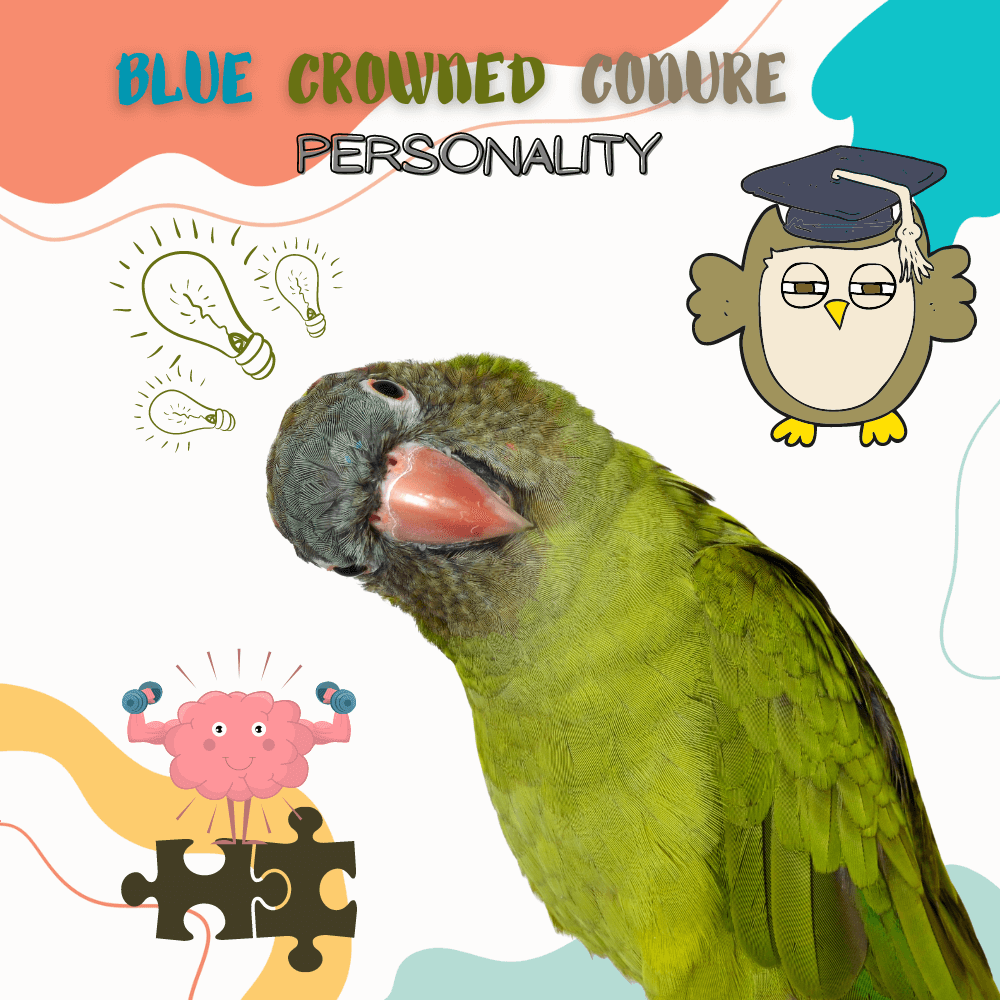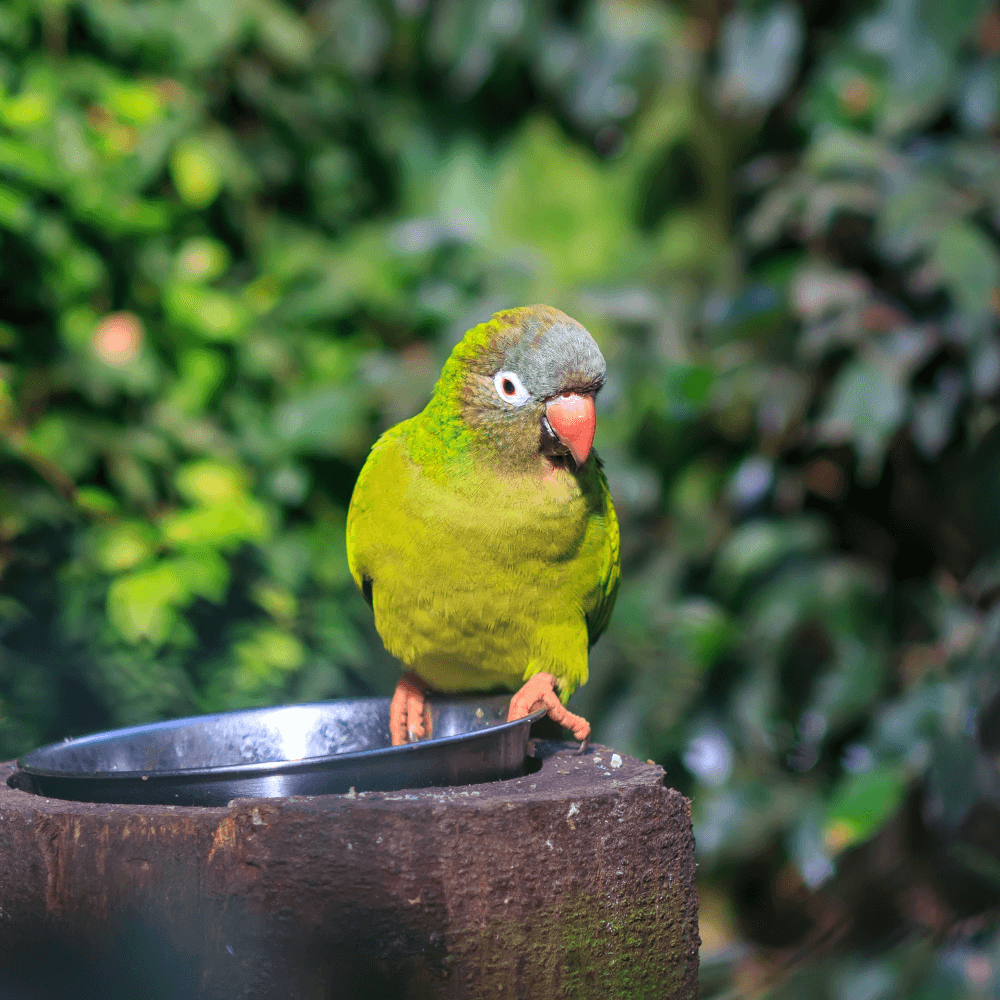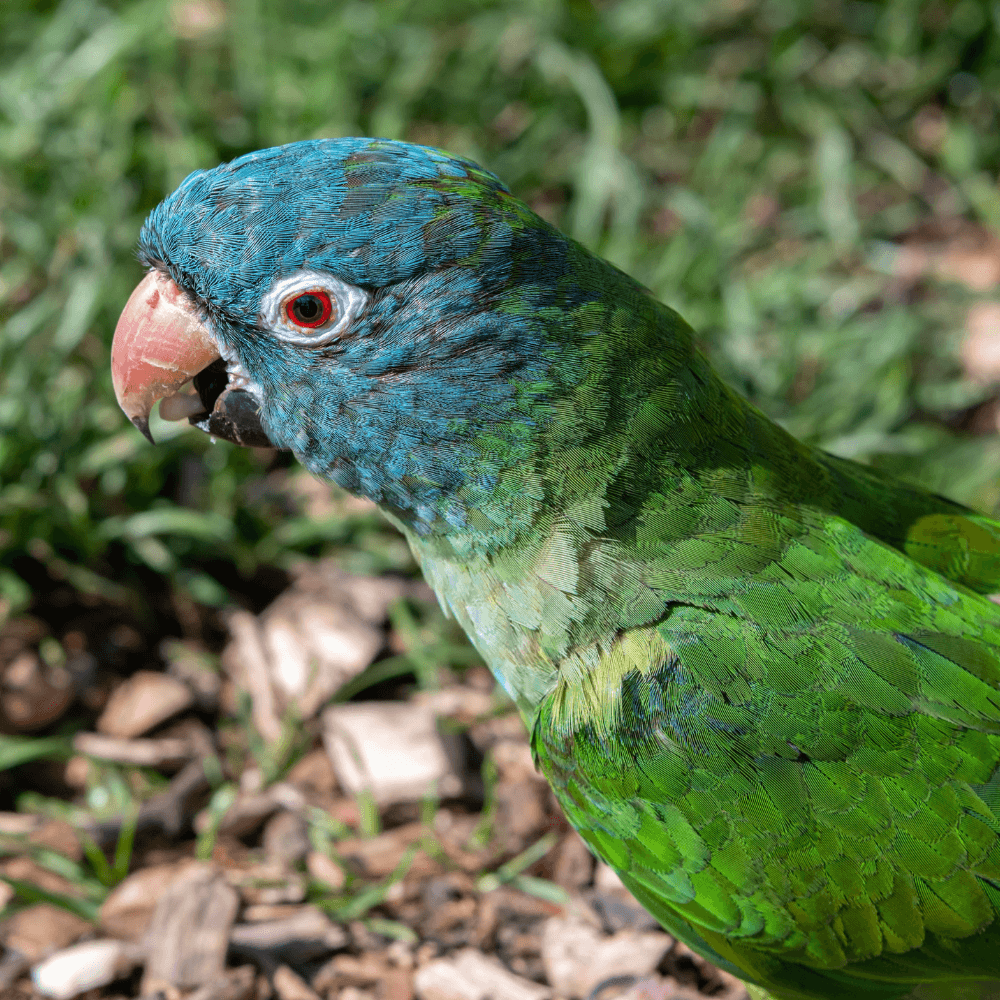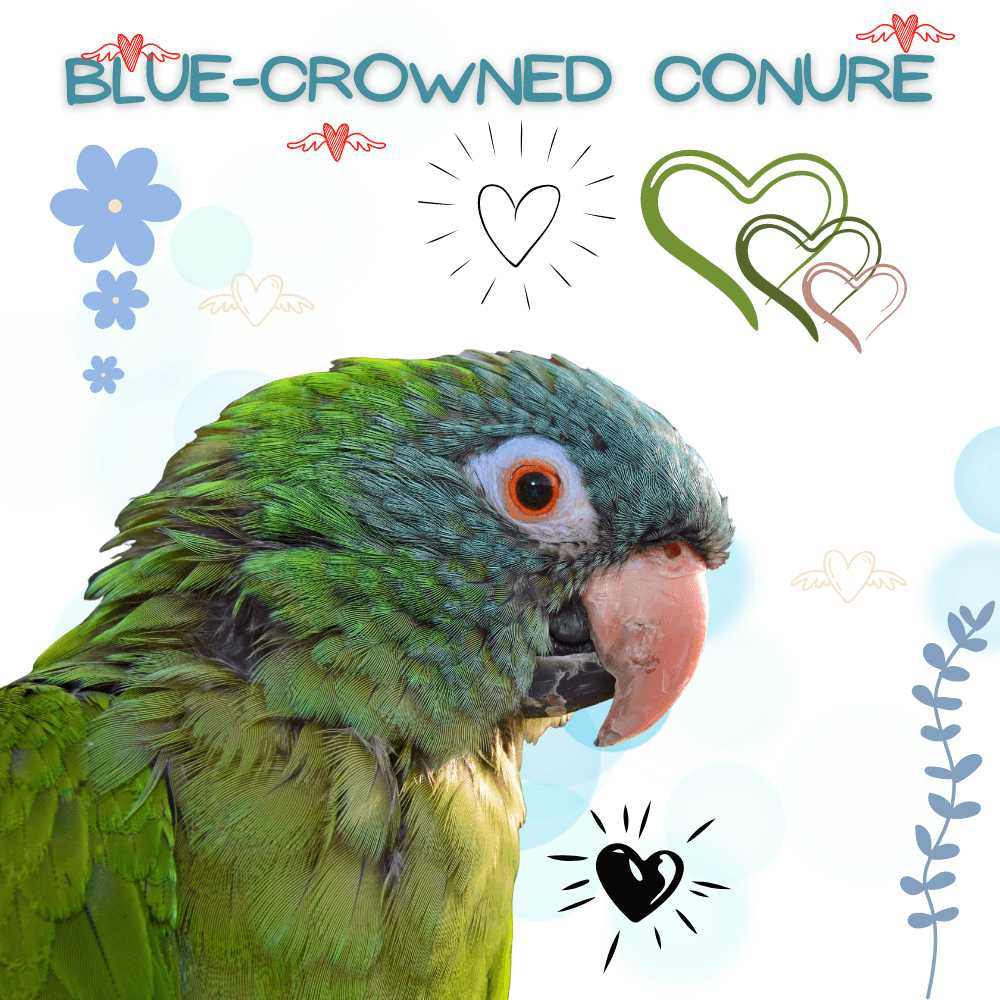The blue-crowned conure is a classic conure in many ways, but this medium-sized parrot is slightly quieter and gentler than most of the conure’s other cousins. This green bird with a bright blue head and spiky tail is a gentle, intelligent, and playful creature that can become a great pet.
It’s the little parrot who starred in two films: Pauly; and the documentary film, The Parrots of Telegraph Hill.
The blue-crowned conure is known by a variety of additional common names, including blue-crowned conure, blue-hooded conure, blue-capped conure, blue-crowned parakeet, and sharp-tailed conure.
Scientific name
The taxonomic name for the blue-crowned conure is Thectocercus acuticaudatus. At least five subspecies show slight color variations:
- Thectocercus acuticaudatus acuticaudatus
- Thectocercus acuticaudatus hemorrhage
- Thectocercus acuticaudatus koenigi
- Thectocercus acuticaudatus neoxenus
- Thectocercus acuticaudatus neumanni
Origin and History
Blue-crowned conures are native to South America and range from eastern Colombia to northern Argentina. Preferred habitat includes grasslands, woodlands, and savannah-like forest edges. It is not found in dense wet forests.
Temperament

Blue-crowned conures are known to be intelligent birds full of playful energy. Like all members of the parrot group — and conures in particular — blue-crowned conures need lots of mental stimulation and exercise to keep them from getting bored and restless.
These birds are very affectionate and social creatures, and they form strong bonds with their owner who treats them well and gives them the attention they desire. Blue crowned conures rarely bite, making them a good pet for families with children.
Although it is a little quieter than other conure species, it must be recognized that no conure is a silent bird and this species will be quite noisy in the morning and evening, which can create problems with its neighbors. relatives. With a known ability to screech and screech, it’s not the best bird for apartment living.
Although conures, in general, do not talk as much as other types of parrots, the blue-crowned conure ranks among the best conure talkers. They are able to learn several words and short phrases.
Blue-crowned conure Size
The blue-crowned conure reaches an adult height of 14 to 16 inches, from the tip of the beak to the end of the spiky tail.
Blue-crowned Conure Colors
At birth, the blue-crowned conure has a head that is actually reddish in color but turns bright blue by the time it reaches maturity. In addition to the parakeet’s green body and blue head, blue-crowned conures have reddish tips on their tail feathers, pink legs, and feet, a horny beak, and white rings around their eyes.
Males and females have the same color and pattern.
Blue-crowned conure lifespan
In captivity, this bird can easily live up to 30 years with proper care.
Blue crowned conure care

The blue-crowned conure breeds easily in captivity; it is one of the rare species of parrots relatively easy to find in pet stores, as well as among breeders.
This is not a bird you should plan on leaving confined to a cage most of the time. The blue-crowned conure is a very social bird that spends its time in a flock when living in the wild. In captivity, you will perform the same function as your herd mates. Your conure will want to get out of the cage and interact with you for as long as needed.
Since it’s usually not possible for your pet to be out of the crate all the time, give him a good, spacious enclosure and fill him with good toys he can chew on, which will provide him with both l exercise and stimulation. Be prepared to give your bird at least 3-4 hours of out-of-cage time each day. A free-standing play structure outside of the cage is a good idea.
Many owners report that a blue-crowned conure is much happier if it has another bird as a companion. It may also be happier if you leave the television or radio playing when you need to leave the bird alone in the house.
In the wild, conures have been known to bathe daily, and in captivity, they need a bath at least once a week and more often if possible. Frequent bathing will keep the feathers and skin healthy, and bathing your bird in a mist of warm, steaming water will also give you valuable interaction time with your pet.
It is best to train these birds by ignoring bad behavior and rewarding good behavior with attention and treats. No amount of training will make this naturally noisy bird a quiet bird. Trying to scold the bird when it howls will only make it louder. Blue-crowned conures are quite talkative and, with proper training, can learn a number of words and phrases.
Blue-crowned Conure diet
In the wild, blue-crowned conures normally feast on a varied diet of fruits, vegetables, nuts, berries, and grains. Conures in captivity need an equally varied diet of fresh fruit and high-quality pellets. Conures fed only seeds and nuts often have health problems.
Like many birds, chocolate and avocado are toxic to conures.
Blue crown conure for adoption

A blue-crowned conure is a species with a naturally high energy level. She, therefore, needs to do 2 hours of physical exercise outside the cage every day. This time can also give the bird some of the essential social interactions it craves. Make sure your conure has access to plenty of chew toys to exercise their jaw muscles. Without chew toys, your conure may direct its instincts to chew on furniture or woodwork.
Common health issues
All conures can be prone to feather picking, which usually happens because they don’t get enough attention and stimulation. Providing lots of social interaction and access to toys will usually prevent this.
The blue-crowned conure, like its cousins, is also susceptible to a variety of common avian diseases, including:
- Proventricular dilation disease (TED)
- Psittacine beak and feather disease
- Psittacose
- Aspergillosis
Related article:
- Sun conure
- Green cheek conure
- Nanday conure
- White eyed conure
- Cherry headed conure
- Jendaya conure
- Golden conure

